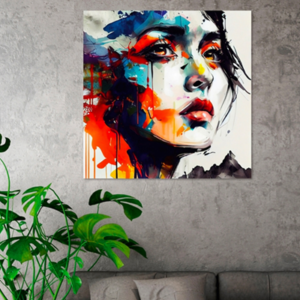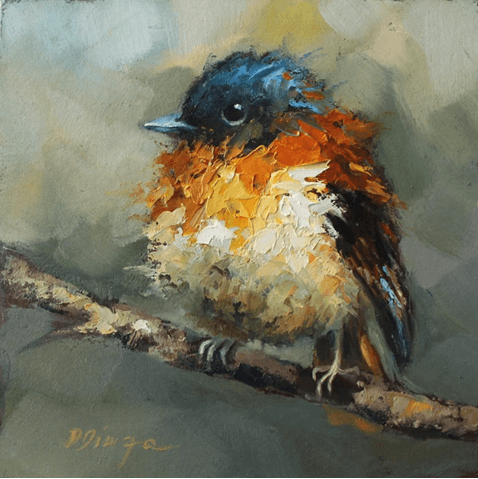A Guide to Capturing Nature’s Beauty
Birds have long been a source of inspiration for artists, symbolizing freedom, grace, and the wonders of the natural world. Classical oil painting, with its rich textures and vibrant colors, is a perfect medium for capturing the intricate details and lifelike beauty of birds. Whether you’re an experienced artist or a beginner looking to explore naturalist bird portraiture, this blog post will guide you through the techniques and tips to create stunning, realistic bird paintings.
The Allure of Naturalist Bird Portraiture
Naturalist art aims to depict subjects with scientific accuracy and artistic beauty. Bird portraiture, in particular, requires a keen eye for detail, an understanding of anatomy, and a deep appreciation for the unique characteristics of each species. Classical oil painting techniques, such as layering, glazing, and fine brushwork, allow artists to achieve the lifelike textures and vibrant colors that bring birds to life on canvas.

Essential Materials for Bird Portraiture
Before you begin, gather the right materials to ensure your painting process is smooth and enjoyable:
- Oil Paints: Invest in high-quality paints for rich pigmentation. Essential colors include titanium white, ultramarine blue, burnt sienna, cadmium yellow, and viridian green.
- Brushes: Use a variety of brushes, including fine detail brushes for feathers and softer brushes for blending.
- Canvas or Panel: Choose a smooth, primed surface that allows for fine detail work.
- Palette: A wooden or glass palette is ideal for mixing colors.
- Mediums: Linseed oil or a slow-drying medium can help you achieve smooth transitions and fine details.
- Reference Photos: High-quality photos of birds are essential for capturing accurate details and poses.
Step-by-Step Guide to Painting a Bird Portrait
1. Research and Reference
Start by studying the bird species you want to paint. Observe its anatomy, feather patterns, and unique markings. Use high-resolution photos or observe birds in nature to understand their posture, movement, and behavior.
2. Sketch the Composition
Create a detailed pencil sketch of your bird on the canvas. Pay attention to proportions, the angle of the head, and the placement of wings and tail. This sketch will serve as the foundation for your painting.
3. Block In the Base Colors
Using thin layers of paint, block in the basic shapes and colors of the bird. Focus on the overall form rather than details at this stage. Use neutral tones to establish the shadows and highlights.
4. Build Up Layers
Oil painting is all about layering. Gradually build up the colors and textures, starting with the darkest areas and working toward the lighter ones. Use a dry brush technique to create the fine texture of feathers.
5. Add Details
This is where your painting comes to life. Use fine brushes to add intricate details like individual feathers, the glint in the eye, and the texture of the beak. Pay close attention to the direction of the feathers and the subtle color variations.
6. Refine the Background
A naturalist bird portrait often features a simple, unobtrusive background that complements the subject. Use soft, muted colors to create depth without distracting from the bird.
7. Final Touches
Step back and assess your painting. Add any final details or adjustments to enhance realism. Use glazing techniques to deepen colors and create a luminous effect.
Tips for Achieving Realism in Bird Portraiture
- Study Feather Patterns: Each bird species has unique feather patterns. Take time to observe and replicate these details accurately.
- Focus on the Eyes: The eyes are the focal point of any portrait. Capture the light and life in the bird’s eyes to create a connection with the viewer.
- Use Subtle Color Variations: Birds’ feathers often have subtle shifts in color. Mix your paints carefully to replicate these nuances.
- Pay Attention to Lighting: Natural lighting can dramatically affect the appearance of your subject. Study how light interacts with the bird’s form and feathers.
- Practice Patience: Classical oil painting is a slow and deliberate process. Take your time to build up layers and refine details.
Famous Naturalist Bird Artists
Throughout history, many artists have specialized in bird portraiture. Some notable names include:
- John James Audubon: Known for his detailed illustrations in The Birds of America.
- Bruno Liljefors: A Swedish artist famous for his dynamic and realistic wildlife paintings.
- Raymond Harris-Ching: A contemporary artist renowned for his lifelike bird portraits.
Studying the works of these masters can provide inspiration and insight into techniques for capturing birds in oil paint.
Why Naturalist Bird Portraiture Matters
Naturalist bird portraiture is more than just an art form—it’s a celebration of biodiversity and a way to connect with the natural world. By painting birds with accuracy and care, artists can raise awareness about the beauty and fragility of these creatures, inspiring others to appreciate and protect them.
Final Thoughts
Classical oil painting offers a timeless and rewarding way to capture the beauty of birds in stunning detail. With patience, practice, and a deep appreciation for nature, you can create lifelike bird portraits that honor the artistry of naturalist painting. So, pick up your brushes, study your feathered subjects, and let your creativity take flight.
Read more blog on webestory

